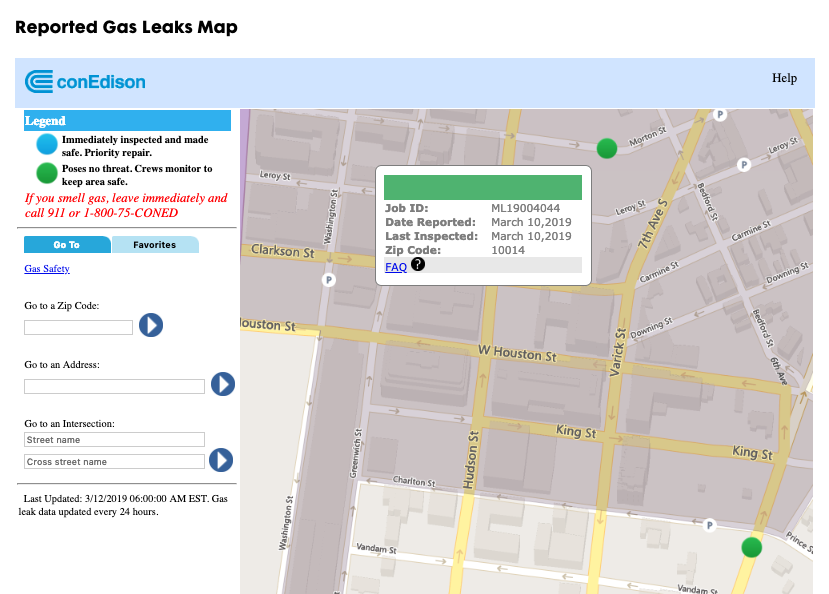New Legislation Calls for “Searchable” Gas Leak Maps
March 19, 2019
Utilities across the U.S. are under new pressure to be more transparent about gas leaks while taking measures to reduce the risk of gas explosions. In January, following a deadly gas explosion in Dallas that killed a 12-year-old girl, Texas State Representative Rafael Anchia filed a series of bills to increase oversight of natural gas companies in Texas. But concerns about gas explosions are not limited to Texas, and utilities across the U.S. and Canada are feeling the heat.
The recent bills filed in Texas fall into two primary categories:
- Bills that require increased transparency from operators about leaks.
- Bills that help reduce the risk of explosions by bringing infrastructure up to date.
The First Set of Bills - Greater Transparency
The first set of bills calls for greater transparency from operators about gas leaks and planned repairs. In addition to managing databases that track leaks and safety violations, another key part of the proposed legislation employs the use of interactive, searchable gas leak maps. According to Representative Anchia, “... what we want to do is empower people in their communities, so that when they smell a gas leak or see one on an interactive map, they can immediately call the gas company, have them come, fix those leaks.”

The concept of an interactive gas leak map is not new. In fact, several utilities have started to use this type of map in order to track locations of leaks that are being monitored or that are slated for repair. In 2015, a utility in New York City implemented a gas leak map that provides customers with up-to-date information about leaks the utility is aware of including the date the leak was first reported, when it was last inspected, and the level of threat to the public. Because gas leaks can be very dangerous, the utility does not allow customers to report leaks through the map, but urges customers to call the utility immediately to report the smell of gas or suspected leaks. Another New York state utility has also implemented a gas leak map, allowing customers to view information about previously reported leaks.
The Second Set of Bills - Reducing Risks
The second set of bills seeks to require operators of natural gas lines to take measures to reduce the risk of explosions. These bills call for the replacement of older cast iron and steel pipes, some of which are nearly a century old. At the same time, the bills also hope to impose higher fines for safety violations.
With more than 2.4 million miles of gas pipeline in the U.S., replacing pipelines will not be easy. Many of the pipelines are located in densely packed urban areas with lots of people, pavement, and other utility lines intertwined, making the work difficult at best. Due to congestion, there are also pressures for operators to restrict work to off hours and to limit road closures. At the same time, operators are expected to keep gas rates affordable to accommodate low-income customers and are often opposed by environmental and grassroots organizations that disapprove of gas lines in general.
Contact Us Today
While improving infrastructure requires significant time, money and resources, providing more transparent information is something utilities may be able to do now. KUBRA Gas Leak maps offer a number of features for utilities including an interactive, searchable map interface, a responsive map design that optimizes viewing for desktops or mobile devices, a table that summarizes leaks by area, and the ability to add safety messaging within the map menu or as a link in the information panel. For a demo of the solution, please complete the KUBRA demo request form here.